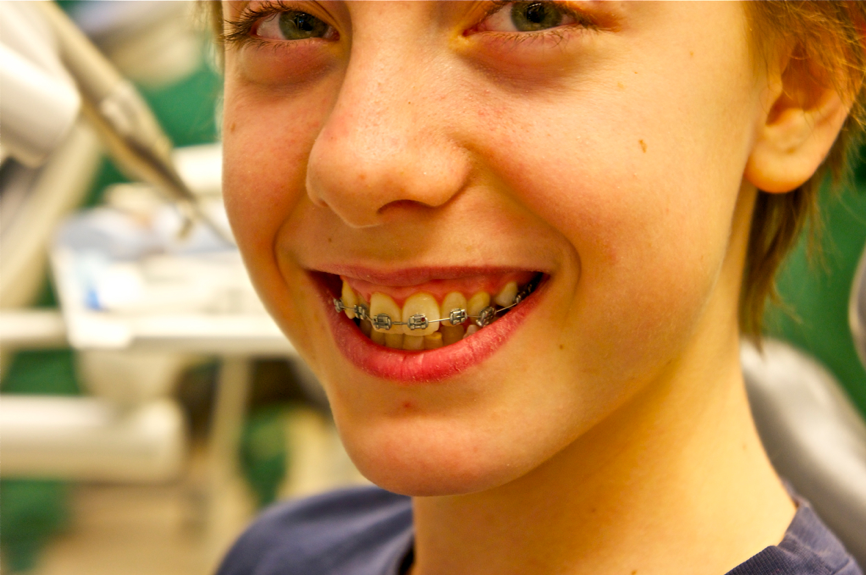What Sets Cumming Braces and Aligners Aside From Other Orthodontic Treatments
What Sets Cumming Braces and Aligners Aside From Other Orthodontic Treatments
Blog Article
Comprehensive Guide to Orthodontics Procedures for Dealing With Oral Misalignments
Understanding the intricacies of each procedure, including their devices, advantages, and prospective disadvantages, is important in making notified decisions about one's orthodontic treatment. As we browse with the detailed guide to orthodontic procedures for correcting oral imbalances, the elaborate details of each approach will certainly unfold, shedding light on the course towards a useful and unified dental alignment.
Orthodontic Procedures Review

In addition to clear aligners and traditional dental braces, orthodontists may likewise advise various other treatments like headwear, palatal expanders, or retainers to resolve certain positioning issues (braces). These treatments are customized to each person's unique requirements and might involve a combination of therapies to achieve the desired outcomes. Normal adjustments and tracking are critical parts of orthodontic treatment to make certain progress is on track and to make any type of essential modifications along the road. By undertaking orthodontic treatments, patients can not only attain a straighter grin yet also improve their general dental wellness and feature.
Conventional Braces: Exactly How They Function
When considering orthodontic therapies for dental misalignments, typical braces stand apart as a time-tested method for remedying teeth positioning. Traditional braces contain brackets, cables, and bands that function with each other to apply continuous stress on the teeth, slowly moving them into the wanted positioning. The brackets are affixed to the teeth using an unique adhesive, and the cords are threaded with the brackets. By adjusting the tension of the cords, orthodontists can manage the direction and pressure used to each tooth, directing them into proper positioning in time.
One trick facet of how standard dental braces job is the process of bone improvement. As stress is related to the teeth with the dental braces, the bone surrounding the teeth is reshaped to support the brand-new tooth placements. This makeover is vital for the lasting security of the corrected positioning. Individuals will certainly require normal changes at the orthodontist's workplace to ensure the dental braces remain to use the correct stress for efficient teeth motion.
Invisible Aligners: Cons and pros
These clear, personalized trays are essentially unnoticeable when put on, making them an enticing choice for individuals looking for a more cosmetically pleasing orthodontic treatment. People can eliminate the aligners before consuming or brushing their teeth, lowering the danger of food obtaining stuck in the appliance and streamlining the cleaning process.

Surgical Orthodontic Options
Surgical interventions in orthodontics present sensible options for resolving complex dental misalignments that might not be effectively solved via conventional orthodontic treatments. While unseen aligners and traditional braces can deal with lots of orthodontic concerns, specific situations require surgical treatment to achieve optimum outcomes. Surgical orthodontic choices are normally suggested for serious malocclusions, significant jaw discrepancies, and situations where the underlying bone structure needs alteration to accomplish proper alignment.
One usual medical orthodontic procedure is orthognathic surgical treatment, which involves rearranging the jaws to remedy practical concerns such as problem talking or eating. This surgical treatment is frequently executed in partnership with an orthodontist who aids line up the teeth prior to and after the procedure. Surgical orthodontics may likewise involve treatments to subject impacted teeth, eliminate excess gum cells, or reshape the jawbone to create an extra harmonious facial profile.
Prior to thinking about surgical orthodontic options, people undertake a comprehensive evaluation to figure out the requirement and potential link benefits of such treatments. invisalign. While surgery may appear difficult, it can substantially improve both the feature and visual appeals of the smile in situations where standard orthodontic treatments fail
Retainers and Post-Treatment Treatment

Failure to comply with post-treatment care guidelines can result in relapse, where the teeth slowly move back towards their initial placements. Regular retainer wear, great oral hygiene, and regular dental check-ups are important for maintaining the outcomes attained with orthodontic surgical treatment and making sure oral sedation dentistry the long-lasting stability this contact form of the dealt with oral positioning.
Conclusion
In conclusion, orthodontic treatments supply different options for correcting oral imbalances. Typical dental braces use steel braces and wires to change teeth right into appropriate alignment. Unnoticeable aligners provide an even more discreet alternative yet may not appropriate for all instances. Surgical orthodontic options are offered for much more extreme misalignments. Retainers are commonly made use of post-treatment to maintain the brand-new positioning. Overall, orthodontic treatments can successfully improve oral health and visual appearance.
As we browse via the extensive overview to orthodontic procedures for dealing with oral misalignments, the intricate details of each technique will certainly unfold, dropping light on the course towards a unified and useful dental positioning. - cumming invisalign
One of the most common orthodontic treatments is the usage of dental braces, which consist of metal brackets and cables that use mild pressure to progressively shift teeth into the preferred placement.When considering orthodontic treatments for dental misalignments, standard dental braces stand out as a reliable method for fixing teeth positioning. Furthermore, unseen aligners might not be ideal for complex orthodontic issues that require more significant teeth movement, as they are usually advised for light to modest instances. Retainers are personalized orthodontic tools designed to hold teeth in their corrected positions after the completion of orthodontic therapy.
Report this page